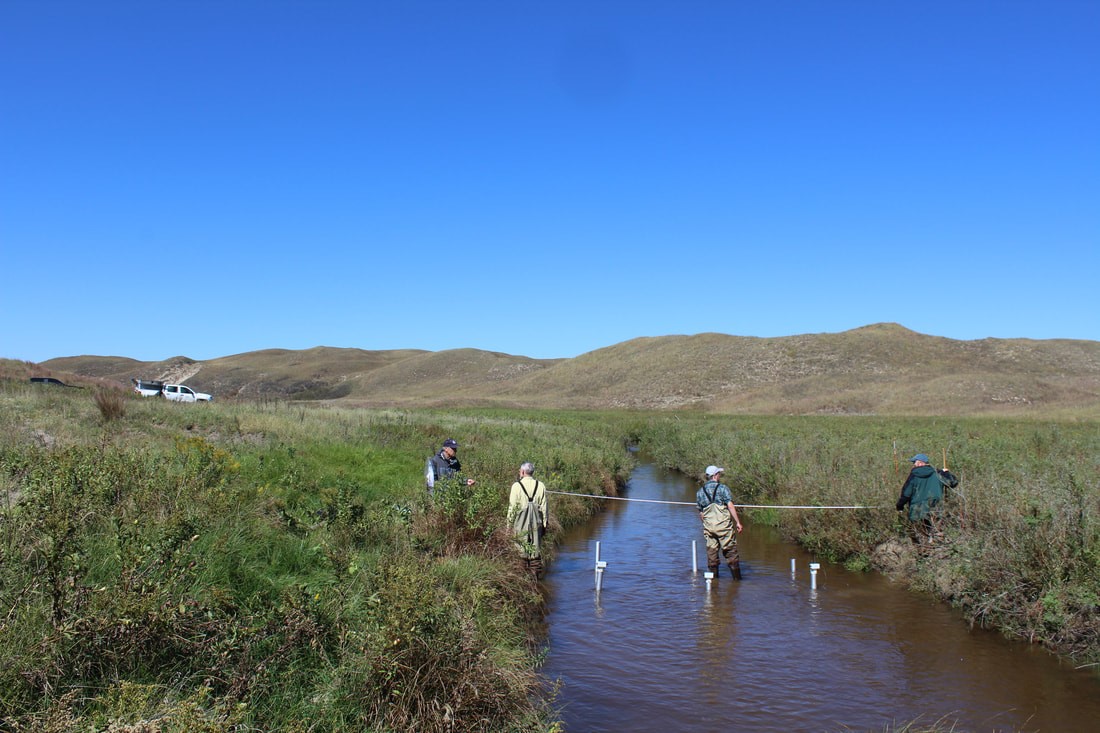
The transit time of groundwater from recharge to discharge to streams is an important control on how quickly contaminants are flushed out of aquifers and into streams and can indicate the quantity of recharging water. Field studies and groundwater models both indicate that groundwater with a range, or distribution, of transit times contributes to streamflow at any given time. However, field studies suggest the relative contribution of young groundwater (i.e., groundwater with short transit times) to streams is substantially less than calculated in modeling studies. This discrepancy in the groundwater transit time distribution (TTD) shape leads to a very different understanding of streamflow sources, fundamentally different predictions of the future impact of groundwater discharge on stream water quality, and potentially different perspectives on the design and assessment of efforts to manage non-point-source contamination in aquifers.
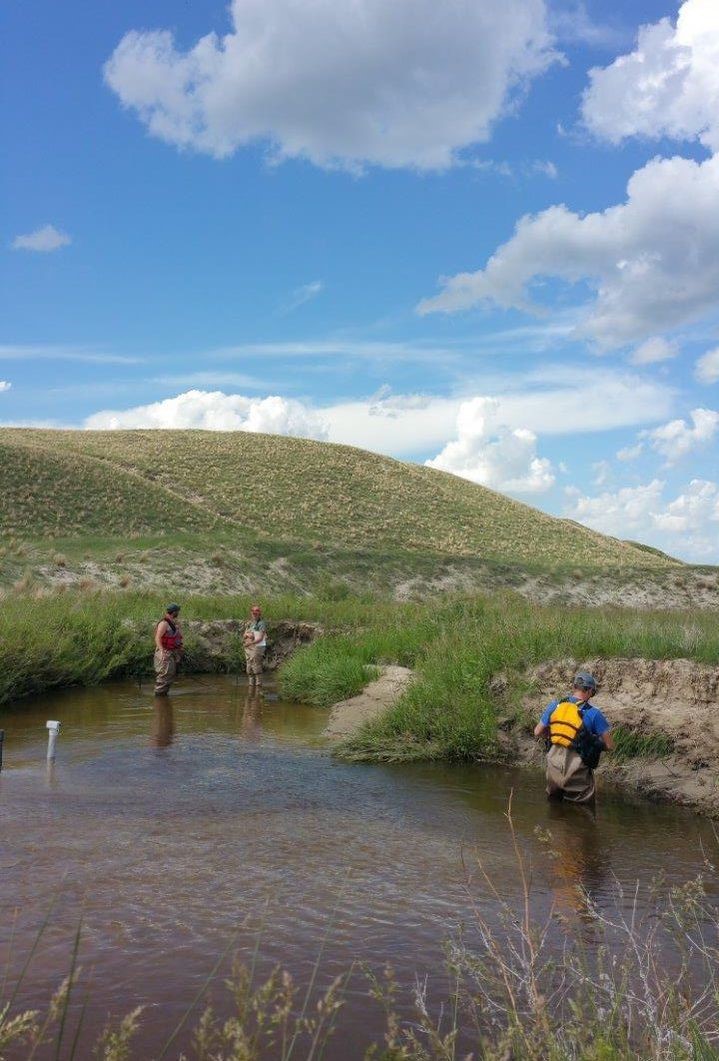
In this project we will conduct field measurements and groundwater modeling to investigate differences in groundwater TTDs, and to determine and understand the processes that drive TTD shapes at a range of spatial scales. Results of the project will assist water resources managers, regulators, and consultants in better understanding and managing both water quantity and quality. Information will be disseminated through Cooperative Extension programming, including interactive online training materials at www.nebraskawatershedscience.org
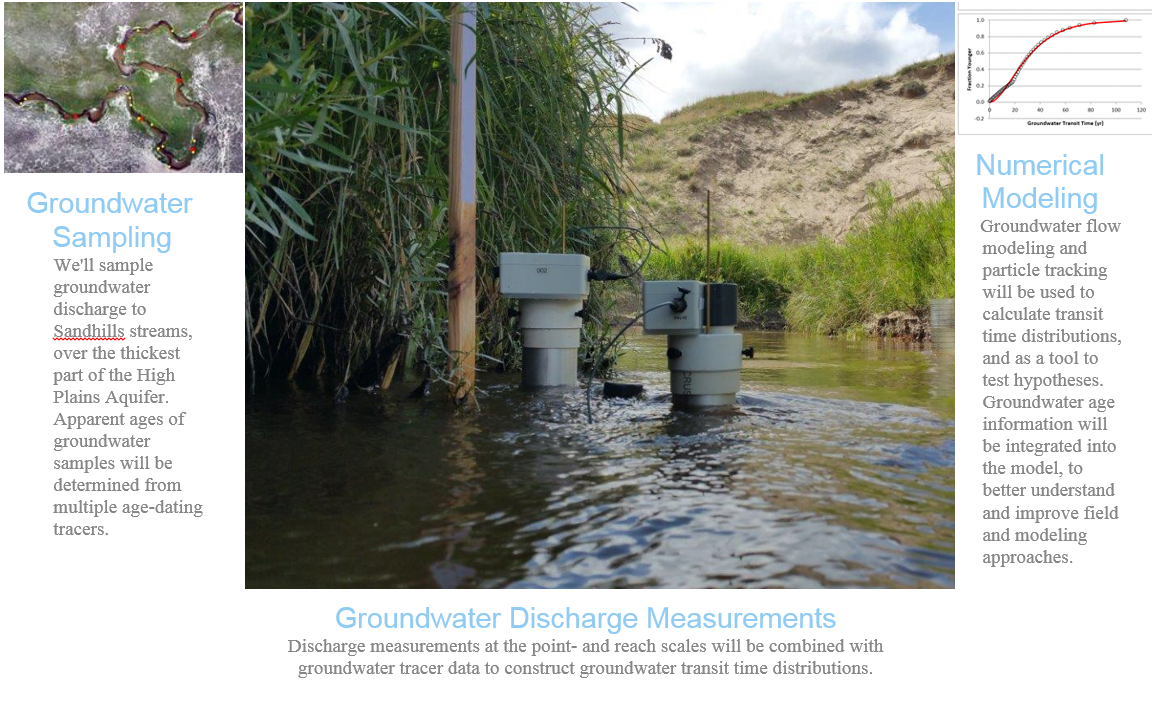
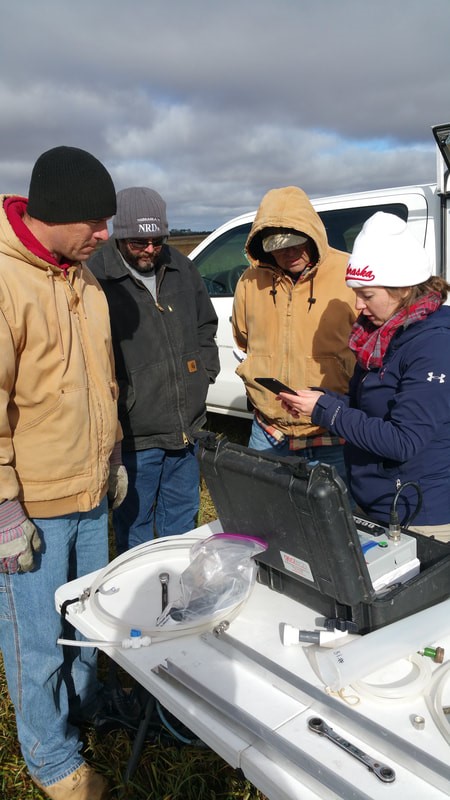
Hydrologic Monitoring and Assessment of Upper Little Blue River Basin
Collaborators/Contributors: Tri-Basin Natural Resources District, Little Blue Natural Resources District
PhD student Mikaela has a strong hydrology background, including a BS degree in Watershed Science from Colorado State and an MS in Geography from the University of Victoria. She is now working on a project funded by the Nebraska Environmental Trust, which focuses on the quantity and quality of groundwater in south-central Nebraska. This area is especially interesting because of a substantial groundwater mound that has developed due to decades of irrigation canal leakage. The project includes groundwater age-dating, analyses of isotopes, recharge estimation, and analysis of groundwater nitrate data.
Funding for this project is provided through the Nebraska Environmental Trust.
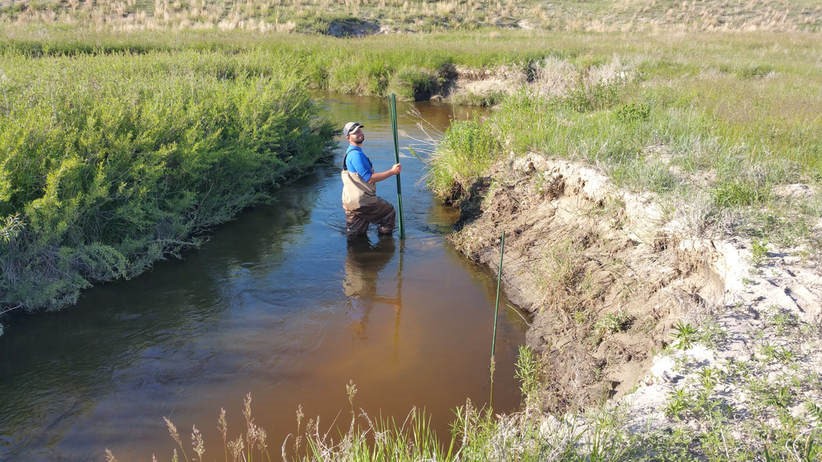
A comparison of informed and uninformed sampling using heat as a preliminary indicator of focused groundwater discharge
Collaborators/Contributors: CTEMPS, USGS
MS student Mason has been doing a great job working on this "heat as a tracer" project while also working as a USGS student worker. He gave an oral presentation at GSA in 2017 and has presented in other poster sessions.
Fiber-optic distributed temperature sensing (FO-DTS) has been used successfully to identify focused groundwater discharge for fluid sampling and vertical flux analysis (“informed measurements”). However, results from informed measurements have not been formally compared to discharge measurements made at pre-determined locations in the same reach (“uninformed sampling”). We deployed an FO-DTS cable along the left, center, and right sides of a small meandering sand-bed stream and found significant differences in groundwater discharge rate between informed and uninformed locations.
Funding for this project was provided through the Daugherty Water for Food Global Institute at the University of Nebraska-Lincoln, and a pilot study equipment grant from CTEMPS.
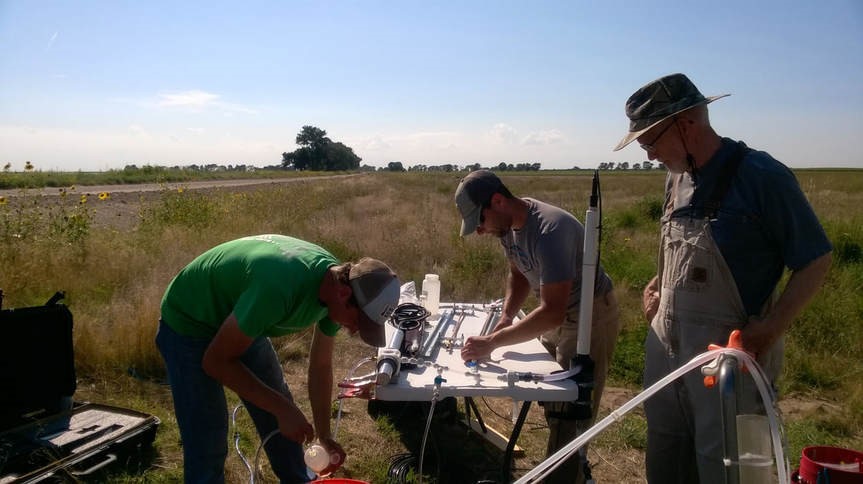
Evaluating the influence of water resources management and environmental factors on groundwater quantity and quality in an irrigated landscape
Collaborators/Contributors: North Platte Natural Resources District, USGS
Marty is an Environmental Engineering student (MS), and he has excelled in the field and the office. Marty has given oral presentations (ASABE 2017, 2018) and presented a poster at the Daughtery Water for Food Global Conference (2017). His work will also be the focus of an invited talk at the American Geophysical Union Fall Meeting (2018). He successfully defended his thesis in 2018 and is now working for the Wisconsin DNR.
The shallow aquifer in the Dutch Flats area of Nebraska is replenished from leaky irrigation canals, deep percolation of irrigation water not captured by evaporation or transpiration, and from precipitation. In the late 1990s, USGS conducted an extensive study of groundwater age and nitrate concentrations in the Dutch Flats area. Groundwater age in the aquifer was, on average, about 9 years. Since the early 2000s, the area has undergone a significant transition from surface irrigation to center pivot technology. Center pivot technology is more efficient (in theory, less water passes through the root zone without being captured by plants) and should lead to lower recharge rates. Lower recharge rates should lead to greater groundwater age in the aquifer, as groundwater movement slows down. We are using groundwater age-dating tracers to test this hypothesis.
Funding for this project was provided through the USGS 104b program and the Daugherty Water for Food Global Institute at the University of Nebraska-Lincoln.
Primary publication:
Wells, M., Gilmore, T., Mittelstet, A., Snow, D., Sibray, S., Wells, M. J., et al. (2018). Assessing Decadal Trends of a Nitrate-Contaminated Shallow Aquifer in Western Nebraska Using Groundwater Isotopes, Age-Dating, and Monitoring. Water, 10(8), 1047. https://doi.org/10.3390/w10081047